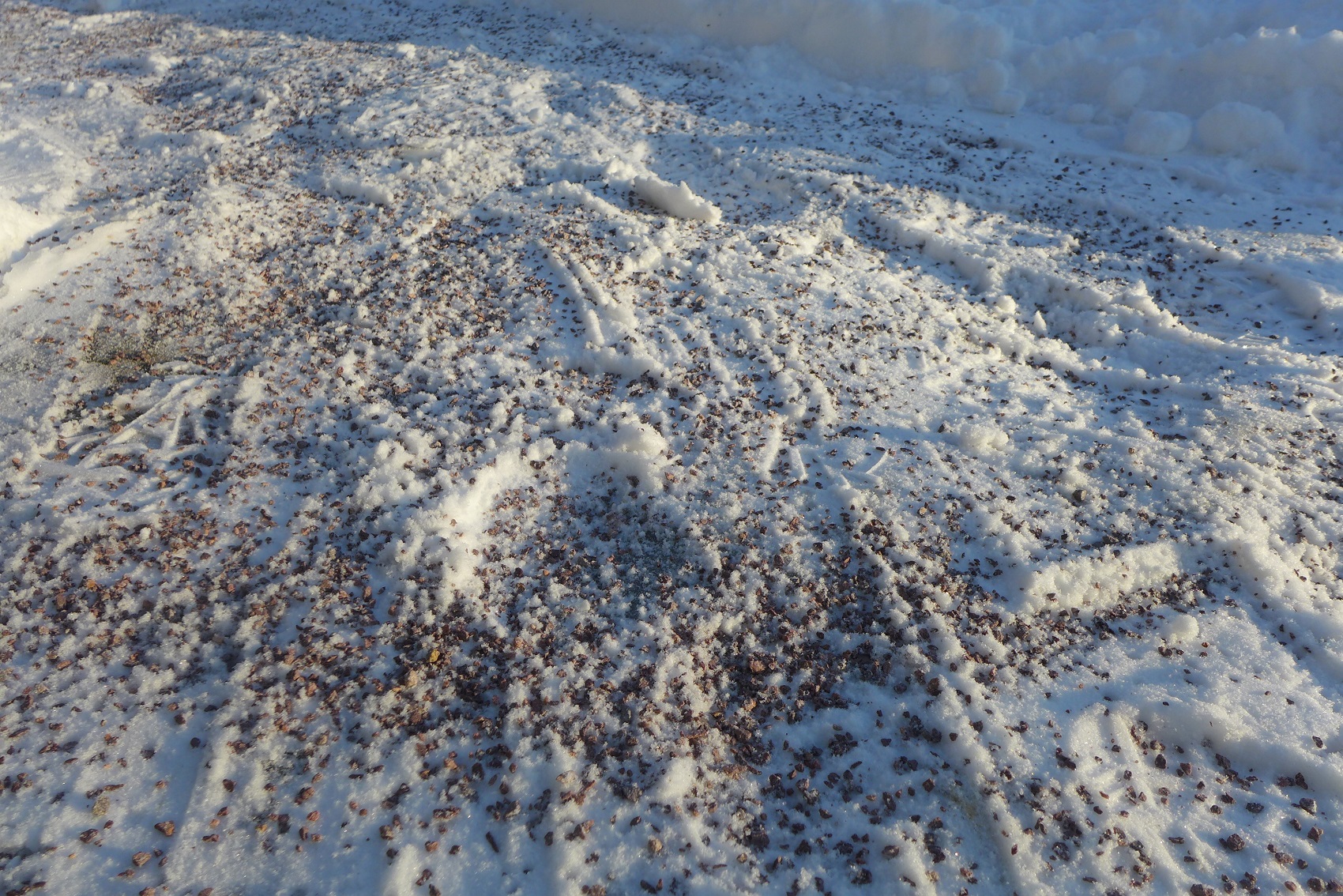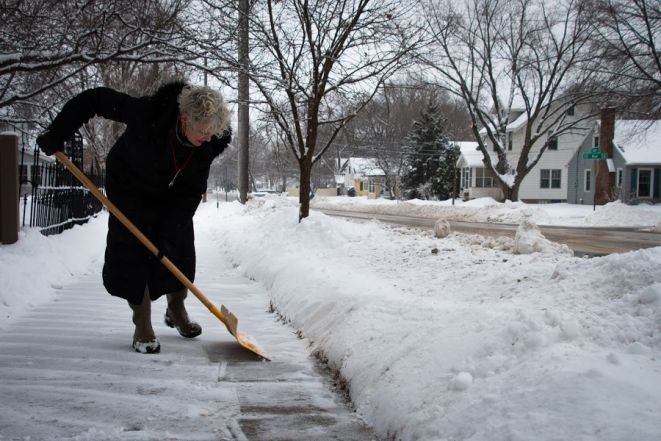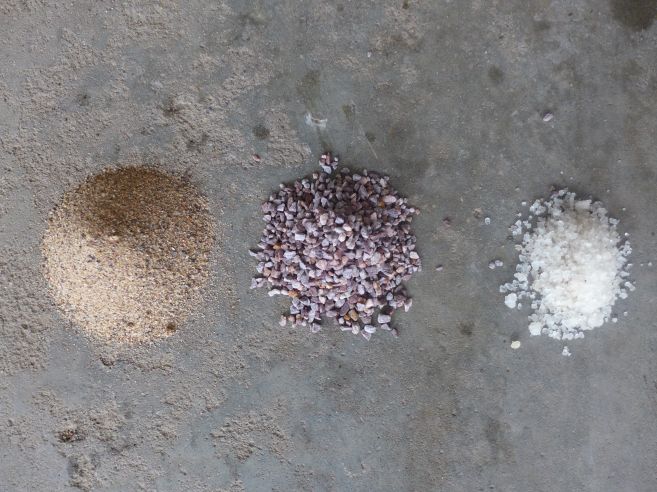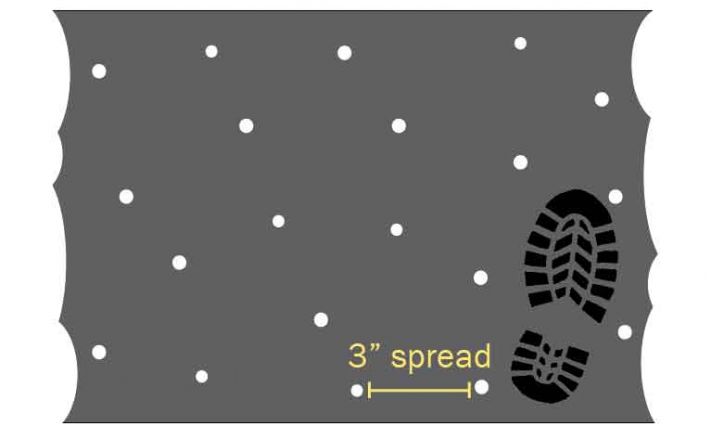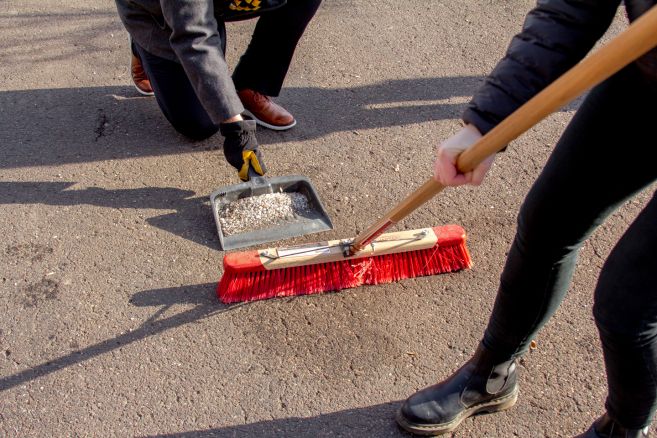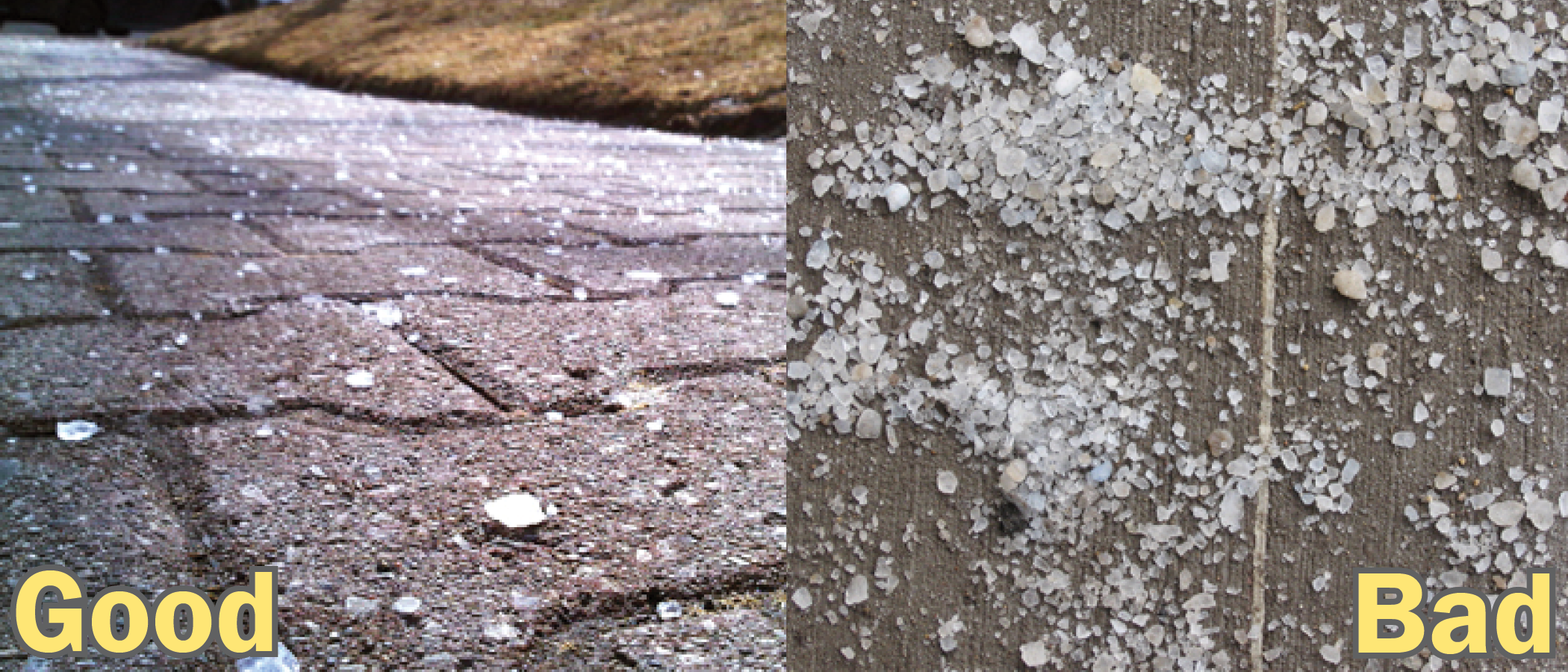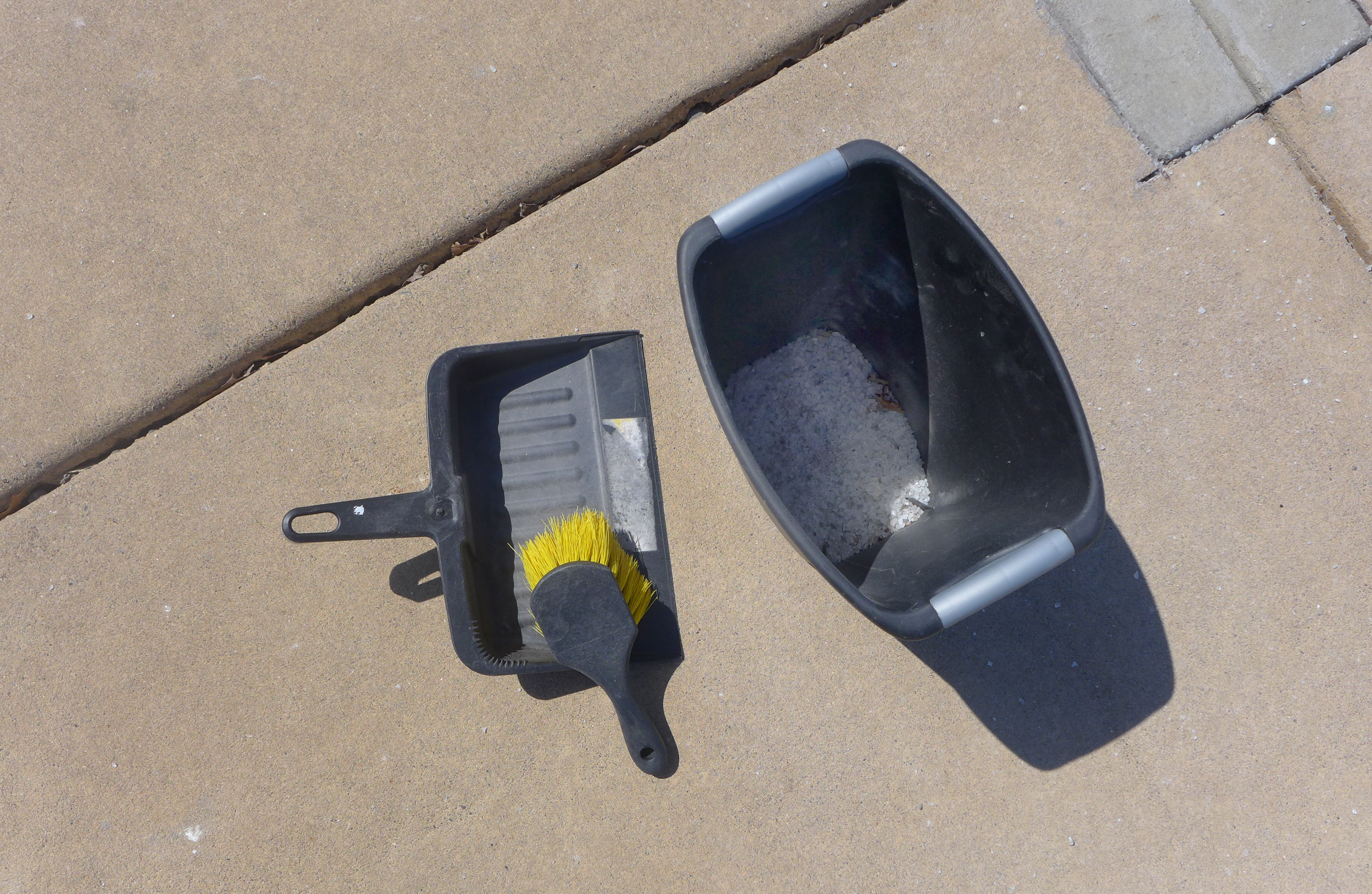Save time and get the most out of a product by picking your strategy ahead of the storm and paying attention to the conditions at hand.
For small sites when shoveling and scraping isn't enough, first reach for grit or sand. These provide temporary traction and should be swept-up both for environmental impact and for re-using later on. Straw can also provide temporary traction and offers a visual to bring attention to icy spots.
Plain rock salt (sodium chloride, NaCl) is ineffective below 15 °F. For colder temperatures, utilize calcium chloride, magnesium chloride, or another product in the chart below.
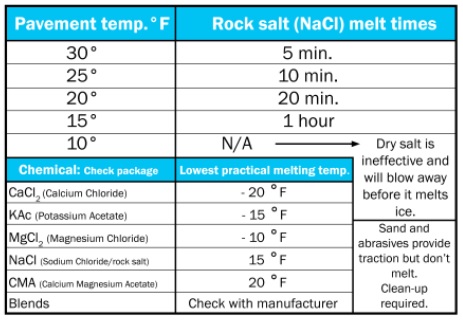
If you have a strong need for bare pavement due to safety concerns or community members having a high risk for falls, a brine strategy may be another option to apply salt strategically yet use less overall. Brines, or anti-icing, are applied before a winter storm, and prevent ice from bonding to the pavement from the start. Store a brine in a closed container for later use, but be careful to mix only as much as you'll need. Dispose of extras in a household drain and not on pavement. Avoid completely coating surfaces - just a light, dotted spray helps prevent ice from bonding. Many municipalities apply anti-icing stripes on roads with ~3" gaps between each line of brine, and this increases the effectiveness of physical removal.

For especially cold conditions, try sand or grit for temporary traction. Sand and grit can also be applied to loose snow if needed. Acetates are a non-chloride option, but still require the same careful application because they contain nutrients that can reach waterbodies and contribute to nutrient pollution and excess algae production. Don't be fooled by packaging that claims a product is environmentally friendly - all products have a downside and require responsible application.
